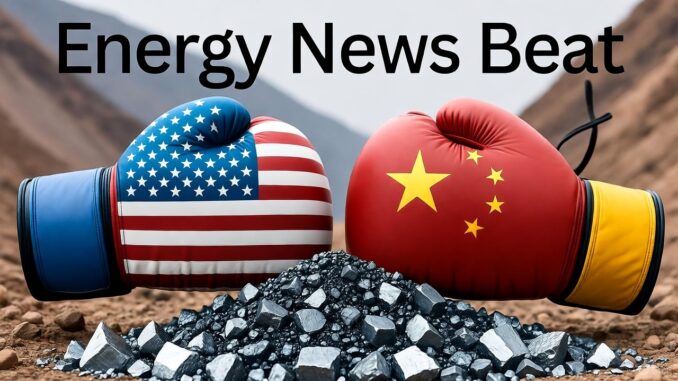
In a bold escalation of the ongoing U.S.-China trade tensions, Beijing has dramatically tightened its grip on the global supply of critical minerals and rare earth elements (REEs). On October 9, 2025, China’s Ministry of Commerce announced sweeping new export controls, expanding restrictions to include five additional rare earth elements and imposing extra scrutiny on end-users in the semiconductor and defense sectors.
This move, which also extends to technologies used in rare earth mining, processing, and magnet production, marks a significant shift from defensive measures to offensive economic warfare, according to analysts.
With China dominating over 80% of the world’s rare earth production, these controls could disrupt supply chains for everything from electric vehicles and wind turbines to advanced military hardware.
Taxes got you down in 2025?
China’s Expanding Arsenal of Export Bans
China’s latest restrictions build on a pattern of incremental controls that began intensifying in 2023. Initially focused on gallium and germanium—key materials for semiconductors and solar panels—Beijing has since added graphite (essential for EV batteries) in late 2023 and antimony (used in flame retardants and munitions) in 2024. The April 2025 curbs targeted seven REEs, including neodymium and dysprosium, in direct retaliation to U.S. tariffs and export bans on advanced chips.
Now, the October expansion adds elements like praseodymium, samarium, and europium, while requiring exporters to provide detailed end-user information, particularly for applications in chips and defense.
These measures aren’t just bureaucratic hurdles; they’re designed to weaponize China’s near-monopoly. Exporters must now obtain licenses for rare earth magnets and related technologies, with approvals potentially denied based on national security concerns.
This comes amid heightened U.S.-China friction, including President Trump’s recent tariffs on Chinese goods. Experts view it as a “peek into the future of global lawfare,” where economic tools like export controls become primary weapons in geopolitical rivalries.
Beijing’s actions are framed as protective, but they send a stark warning to the West: dependence on Chinese supplies could become increasingly precarious.
— Rapid Response 47 (@RapidResponse47) October 10, 2025
|
Mineral/Technology
|
Date of Restriction
|
Key Uses
|
Potential Impact
|
|---|---|---|---|
|
Gallium & Germanium
|
July 2023
|
Semiconductors, LEDs, solar panels
|
Disruptions in tech manufacturing
|
|
Graphite
|
October 2023
|
EV batteries, lubricants
|
Higher costs for renewable energy tech
|
|
Antimony
|
August 2024
|
Flame retardants, batteries, munitions
|
Supply shortages for defense and electronics
|
|
Seven REEs (e.g., Neodymium, Dysprosium)
|
April 2025
|
Magnets for EVs, wind turbines, defense
|
Broad industrial slowdowns
|
|
Five Additional REEs (e.g., Praseodymium, Samarium) & Magnet Tech
|
October 2025
|
Advanced magnets, lasers, nuclear reactors
|
Escalated risks for semiconductors and military applications
|
President Trump’s Fiery Response
President Donald J. Trump didn’t mince words in his October 10, 2025, statement on Truth Social, reposted by the White House Rapid Response account on X (formerly Twitter). In a lengthy post, Trump accused China of “becoming very hostile” and attempting to “clog the Markets” by imposing export controls on rare earths and other critical elements.
He revealed that Beijing had sent detailed letters to countries worldwide, outlining plans to withhold supplies unless certain demands are met—actions he described as “sinister and hostile.”Trump highlighted the U.S.’s own monopoly positions and vowed retaliation: “For every Element that they have been able to monopolize, we have two… Ultimately, though potentially painful, it will be a very good thing, in the end, for the U.S.A.” He signaled a “massive increase of Tariffs on Chinese products coming into the United States of America,” along with other countermeasures.
This comes just weeks before a planned meeting with President Xi Jinping, which Trump now questions, citing no reason to proceed amid the escalating hostility.
The statement, shared via @RapidResponse47 on X, included an image of the full text and garnered significant engagement, with thousands of likes and reposts reflecting public support for a tough stance on China.
What This Means for Investors
For investors in the energy and critical minerals sectors, this tit-for-tat could spell both turmoil and opportunity. Rare earth stocks surged on October 10 following Trump’s post, with companies like MP Materials and Lynas Rare Earths seeing gains of up to 15% as markets anticipated a shift toward non-Chinese suppliers.
Short-term volatility is likely, with potential supply disruptions driving up prices for REEs and related commodities—benefiting miners outside China but pressuring downstream industries like EV manufacturers and renewable energy firms.
Key implications include:Supply Chain Diversification: Investors should eye opportunities in U.S., Australian, and Canadian rare earth projects. The Inflation Reduction Act’s incentives for domestic production could accelerate growth in companies like Energy Fuels or Ucore Rare Metals.
Tariff Risks and Opportunities: Trump’s threatened “massive” tariffs could inflate costs for imported goods, hitting Chinese-exposed stocks but boosting U.S. manufacturers. Sectors like steel and autos, already rebounding from prior tariffs, may see further gains.
Geopolitical Premium: With tensions peaking ahead of the Xi meeting, commodity funds and ETFs tracking critical minerals (e.g., REMX) could experience sharp swings. Long-term, this pushes investment toward “friendshoring” and green tech alternatives, potentially yielding high returns for early movers.
Broader Market Effects: Energy investors, particularly in renewables, face higher input costs, but defense and tech sectors might benefit from government subsidies to secure supplies.
In essence, China’s “running amok” with export controls underscores the fragility of global dependencies, but as Trump asserts, it could ultimately strengthen U.S. positions. Investors willing to navigate the pain may find substantial rewards in a reshaped supply landscape. Stay tuned to Energy News Beat for updates on this unfolding saga.
Tax Burden in 2025?
Crude Oil, LNG, Jet Fuel price quote
ENB Top News
ENB
Energy Dashboard
ENB Podcast
ENB Substack





